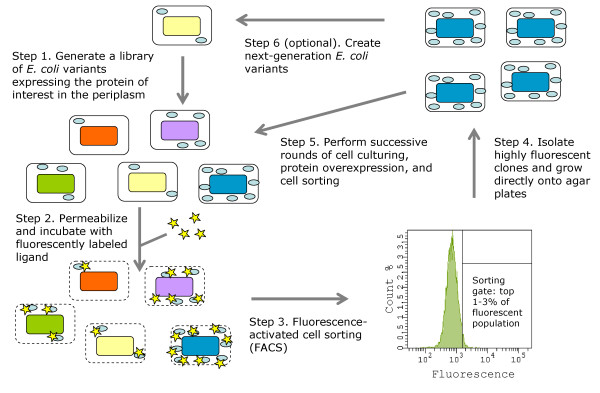The genetics and biochemistry of Escherichia coli are probably the best understood of any known organism. The knowledge gained in the study of E. coli biology has been applied to the development of many of today’s molecular cloning techniques. Most cloning vectors and methods utilize E. coli or its phages as a preferred host, primarily because of the ease with which the bacterium can be grown and genetically manipulated. These same characteristics made E. coli an attractive early choice as a host for the production of large quantities of protein encoded by cloned genes.
Aside from its well-studied biology, E. coli is suitable as the basis of an expression system because of its rapid doubling time and its ability to grow in inexpensive media. Years of study devoted to gene expression in E. coli have provided numerous choices for transcriptional and translational control elements that can be applied to the expression of foreign genes.
As a result, E. coli has been and continues to be the expression system of choice and a substantial body of literature has accumulated on the successful expression of foreign genes in this host. Several problems with protein expression in E. coli have been encountered, and many have been ultimately solved. This unit describes methods that have been developed for production of recombinant protein in E. coli and potential pitfalls that may be encountered.
The expression of recombinant protein, especially using bacterial vectors and hosts, is a mature technology. With the appropriate cDNA and PCR methods, expression plasmids can be rapidly produced. Following sequence determination of the constructs, plasmids are transformed into expression hosts, single colonies picked, and fermentation performed. With E. coli, a 2-liter fermentation using complex media will generate 50 to 80 g (wet weight of cells). Assuming modest protein expression (2% to 5% of the total cellular protein), between 100 and 300 mg of recombinant protein is available in the cells. The problem is, of course, how to isolate it in an active form. Soluble proteins can be recovered with good yields (>50%), and insoluble proteins, which must undergo a denaturation and folding cycle, can be recovered with more modest yields (5% to 20%). Hence, using small-scale fermentations and laboratory-scale processing equipment, proteins (or subdomains thereof) can usually be produced in sufficient quantities (10 to 100 mg) to initiate most studies including detailed structural determinations.
Some strategies for achieving high-level expression of genes in E. coli have been reviewed by Makrides (1996) and Baneyx (1999). Some of the above characteristics also hold true for the production of proteins using yeast and baculovirus eukaryotic expression systems, although more effort and expertise is required to construct the vectors and, with the baculovirus system, produce cells for processing. A yeast expression system may be a wise choice for proteins that form insoluble inclusions in bacteria, and for the production of membrane-associated proteins.
The baculovirus system has proven very useful for producing phosphorylated proteins and glycoproteins and for the co-expression of interacting proteins. The construction of stable mammalian protein expression vectors requires considerably more time and effort but may be the only approach for producing complex multidomain proteins. Cells growing to cell densities of 1-5 × 109 cells/ml can be expected to typically secrete >10 mg/liter of product. Alternatively, transient gene expression systems using various viral vectors can be used to produce lesser amounts of protein, which is useful for feasibility studies. It is of interest to note that the large-scale transient expression systems in mammalian cells are being actively developed by biotechnology companies (Wurum and Bernard, 1999).
The initial choice of host system for the production of recombinant proteins for many investigators is Escherichia coli. This is due to such factors as ease of genetic manipulation, availability of optimized expression plasmids, and ease of growth. This unit presents an overview of recombinant protein purification with special emphasis on proteins expressed in E. coli. Practical aspects and strategies are stressed throughout, and wherever possible, the discussion is cross-referenced to the example protocols described in the rest of Chapter 6. The first section deals with information pertinent to protein purification that can be derived from translation of the cDNA sequence. This is followed by a brief discussion of some of the common problems associated with bacterial protein expression. Planning a protein purification strategy requires that the solubility of the expression product be determined; it is also useful to establish the location of the protein in the cell—e.g., cytoplasm or periplasm. This unit includes flow charts that summarize approaches for establish.
